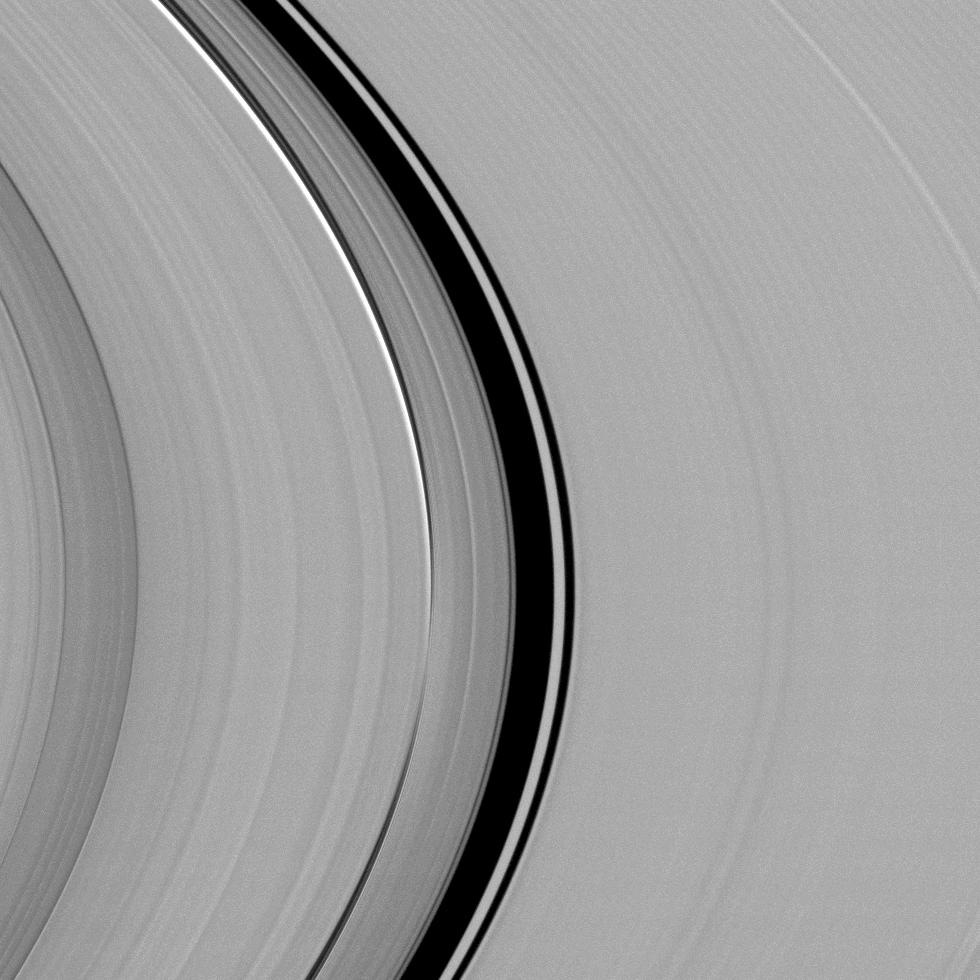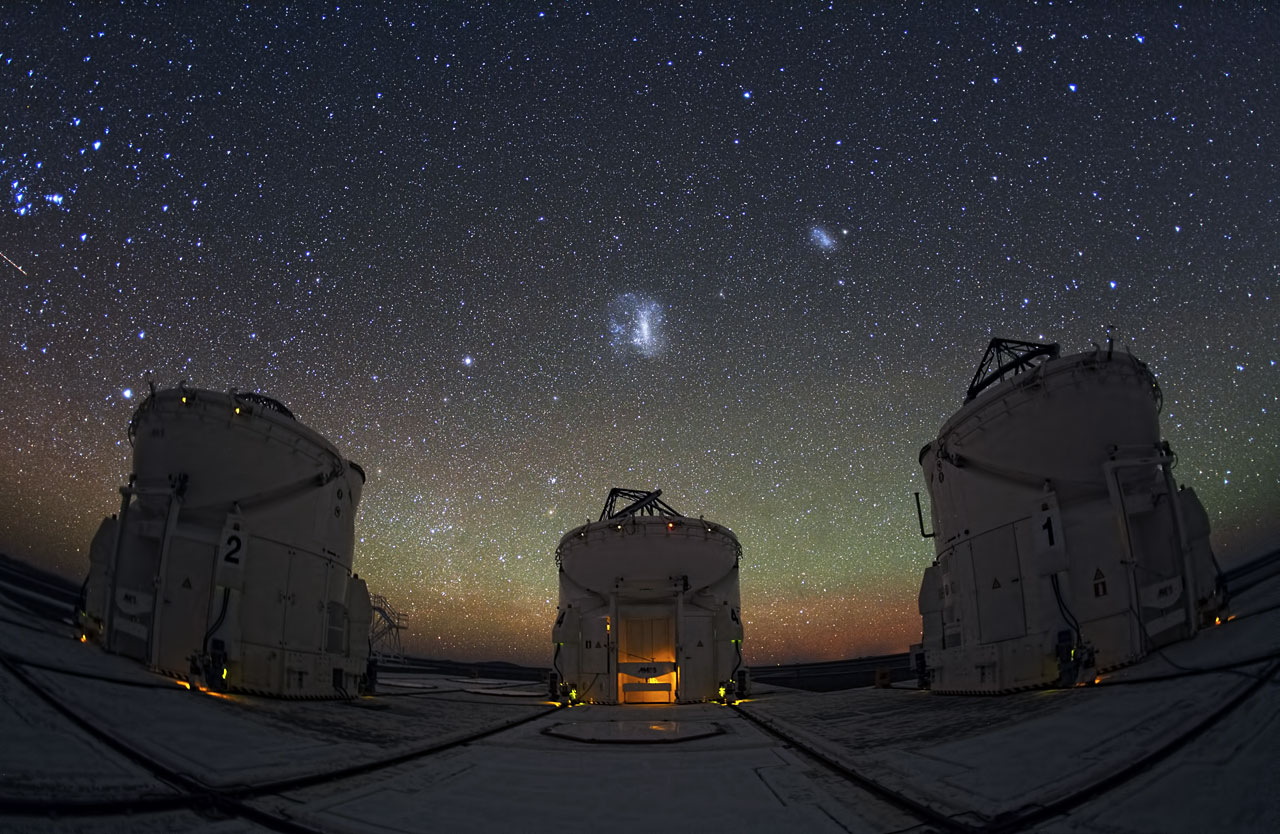Space Image of the Day Gallery (January 2014)
Image of the Day Archives
For older Image of the Day pictures, please visit the Image of the Day archives. Pictured: NGC 2467.
Wild Colors Light Up Your Face
Wednesday, Jan. 1, 2014: This still image from a new NASA movie of the sun shows the wide range of wavelengths – invisible to the naked eye – that NASA's Solar Dynamics Observatory (SDO) telescope can view. SDO converts the wavelengths into an image humans can see, and researchers colorize the light into a rainbow of hues. Yellow light of 5800 Angstroms generally emanates from material of about 10,000 degrees F (5700 degrees C), representing the surface of the sun. Extreme ultraviolet light of 94 Angstroms, typically colorized in green in SDO images, comes from atoms that are about 11 million degrees F (6,300,000 degrees C), serves as a good wavelength for looking at solar flares, which can reach such high temperatures. By examining pictures of the sun in a variety of wavelengths, scientists can track how particles and heat move through the sun's atmosphere.
— Tom Chao
Ride the Cyclone
Thursday, Jan. 2, 2014: The vortex at the atmosphere of Saturn above the planet’s north pole spins, as seen in infrared light. The eye of the immense cyclone stretches about 1,250 miles (2,000 kilometers), 20 times larger than most on Earth. Cassini spacecraft took the image with its narrow-angle camera on June 14, 2013.
— Tom Chao
I’m Being Followed by a Moonshadow
Friday, Jan. 3, 2014: Moonlight fills the sky over ESO's Paranal Observatory in the Chilean Atacama Desert, far away from city lights. The Milky Way appears stretching across the sky, as seen from the platform of the Very Large Telescope. The four VLT Unit Telescopes appear as the four massive blocks in the bottom of the image. Also the VLT's Auxiliary Telescopes stand nearby, featuring round, white domes. The moon, at left, appears in this photo to shine as brightly as the sun. To the right, the shadow of the photographer, ESO photo ambassador Gabriel Brammer, falls on the ground, as he waves with outstretched arms. A fisheye lens captures the entire sky, creating this circular effect with the ground bordering the frame.
— Tom Chao
Darkness on the Edge of the Sun
Monday, Jan. 6, 2014: A dark clump of plasma rose above the sun, then twisted and spun before breaking away and dissipating on Dec. 16-17, 2013. (The clump appears in the center of the image below the bright loops.) This image comes from a 12-hour video clip which showed magnetic forces pulling the clump in different directions before a coronal mass ejection thrust it into space. The large loops emerging from the sun north of the small mass trace magnetic field lines above several active regions. Solar Dynamics Observatory took the image in a wavelength of extreme ultraviolet light revealing ionized iron heated to a million degrees.
— Tom Chao
Aurora, Be Mine
Tuesday, Jan. 7, 2014: Canada's automated aurora camera tweeted this photo on Jan. 3, 2013. The tweet read: "AURORAMAX GALLERY • Latest #photo of #aurora borealis above #Yellowknife, NWT taken at 23:42 MST on January 2, 2014. pic.twitter.com/LLPeyMZsyB" [For more photos of auroras, please see Northern Lights: Amazing Aurora Photos of 2013.]
— Tom Chao
Before It Explodes
Wednesday, Jan. 8, 2014: A new Hubble image shows an ethereal object, known officially as [SBW2007] 1 but sometimes nicknamed SBW1, a nebula with a giant star at its center. The star originally held twenty times more mass than our sun, but now floats encased in a swirling ring of purple gas, the remains of the distant era when it blew off its outer layers. But the star hides a secret: Scientists say that it will go supernova! 26 years ago, a star with striking similarities went supernova — SN 1987A. Early Hubble images of SN 1987A show similarities to SBW1, which gives a snapshot of SN1987a's appearance before it exploded. At a distance of more than 20,000 light-years, the supernova will pose no danger to us when goes off. It may even happen in our own lifetimes. A version of this image was entered into the Hubble's Hidden Treasures image processing competition by contestant Nick Rose.
— Tom Chao
Breaking space news, the latest updates on rocket launches, skywatching events and more!
Feeling the Pull
Thursday, Jan. 9, 2014: NASA's Cassini spacecraft provided a view showing how Saturn’s moon, Titan, interacts with the planet’s rings. This image focuses on two separate locations in the rings where the rhythms of the rings operate in synchrony with different aspects of Titan's 16-day orbit, creating effects that point back towards Titan. The Titan Ringlet, embedded within the Colombo Gap at the center of this image, has a slightly oval shape, and always points its long axis towards Titan. The ringlet’s motion is controlled by a gravitational resonance between Titan's 16-day orbit and the precession of the ring particles’ paths around the planet. Just inside the gap lies a narrow feature that transitions from bright at the top of the image to dark at the bottom. This bending or vertical wave appears owing to a similar resonance with Titan. Cassini spacecraft took the image on Sept. 20, 2009, obtained at a distance of approximately 288,000 miles (463,000 kilometers) from Saturn. [For more Cassini images, see Latest Saturn Photos From NASA's Cassini Orbiter.]
— Tom Chao
Lunar Alpenglow in China
Friday, Jan. 10, 2014: Astrophotographer Jeff Dai sent in a photo of the night sky over southwestern China. He writes: "The arc of winter Milky Way is photographed in this panoramic photo from Yunnan Astronomical Observatory in southwestern China. The dome, housing a 2.4 meter diameter telescope, is [illuminated] by the moonrise alpenglow." [For more amazing images by SPACE.com readers, see Amazing Night Sky Photos by Stargazers: January 2014.]
— Tom Chao
Three Telescopes Are Better Than One
Monday, Jan. 13, 2014: The night sky gleams with stars, nebulas and galaxies over ESO's Paranal Observatory in Chile. Three of the four moveable VLT Auxiliary Telescopes stand below the majestic sky. The units feed light into the Very Large Telescope Interferometer, creating a telescope greater than the sum of its parts. Image released Jan. 6, 2014.
— Tom Chao
We'll Live on Power From the Sun
Tuesday, Jan. 14, 2014: A photograph taken by an Expedition 38 crew member shows the sun shining through a truss-based radiator panel and a primary solar array panel on the International Space Station (ISS) in orbit around the Earth. At the time this photo was taken on Jan. 2, 2014, the crew of the ISS awaited the arrival of the Orbital Sciences’ resupply mission, Orbital-1. The unpiloted Cygnus cargo ship arrived on Jan. 12, 2014, carrying supplies and ants. [See full story.]
— Tom Chao
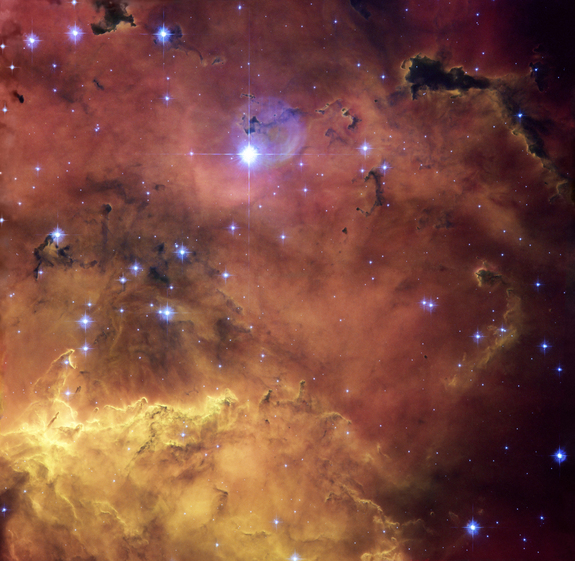
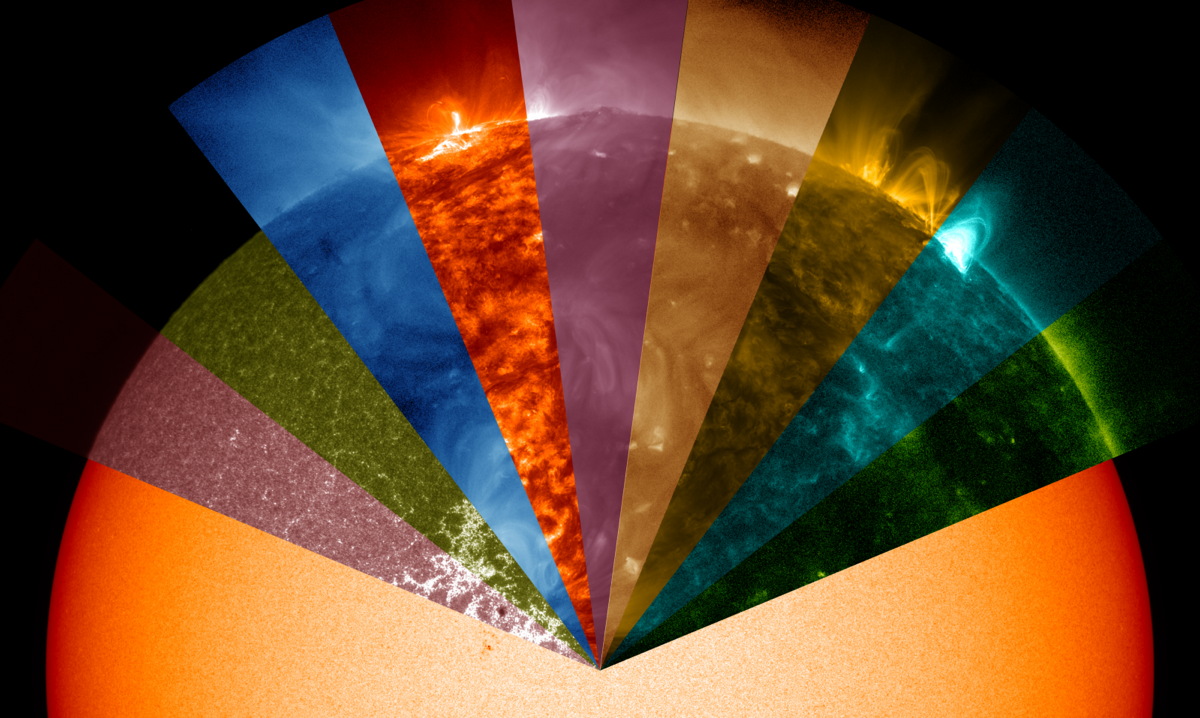
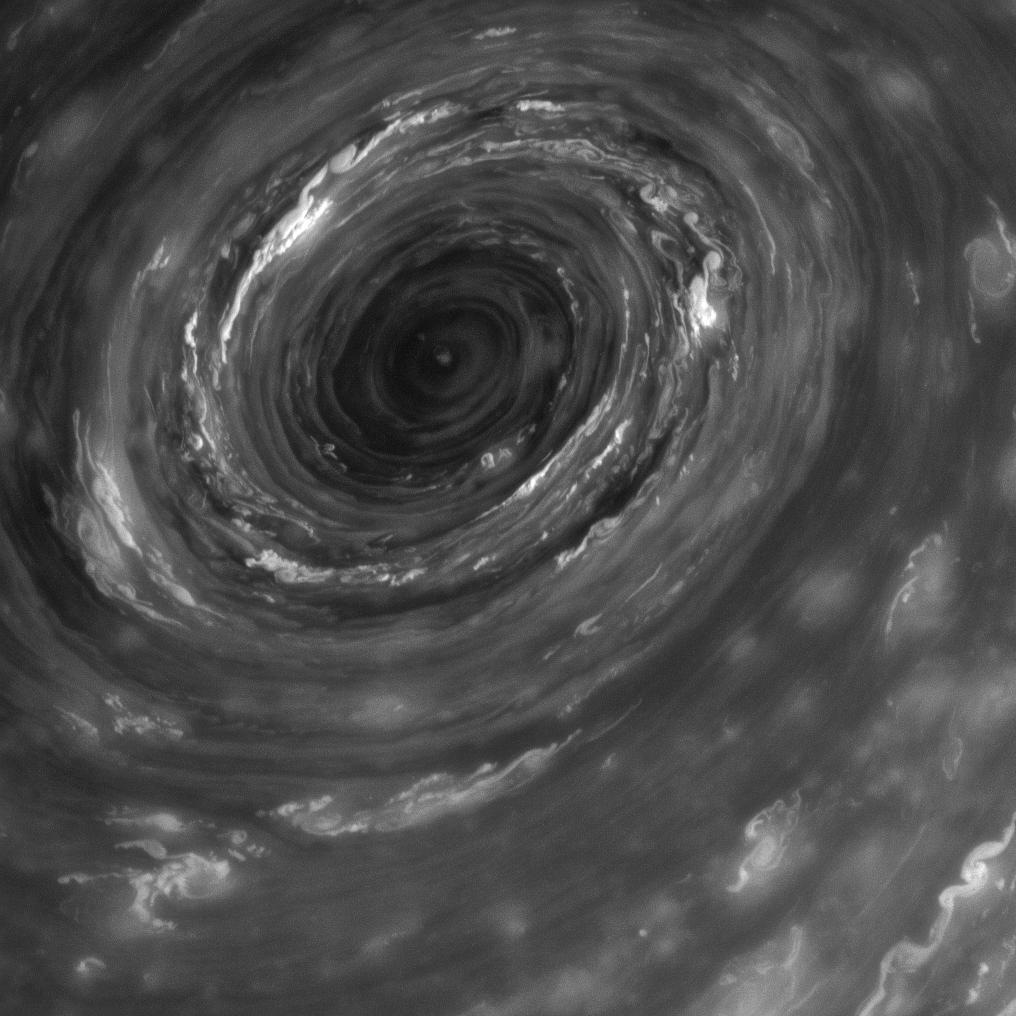
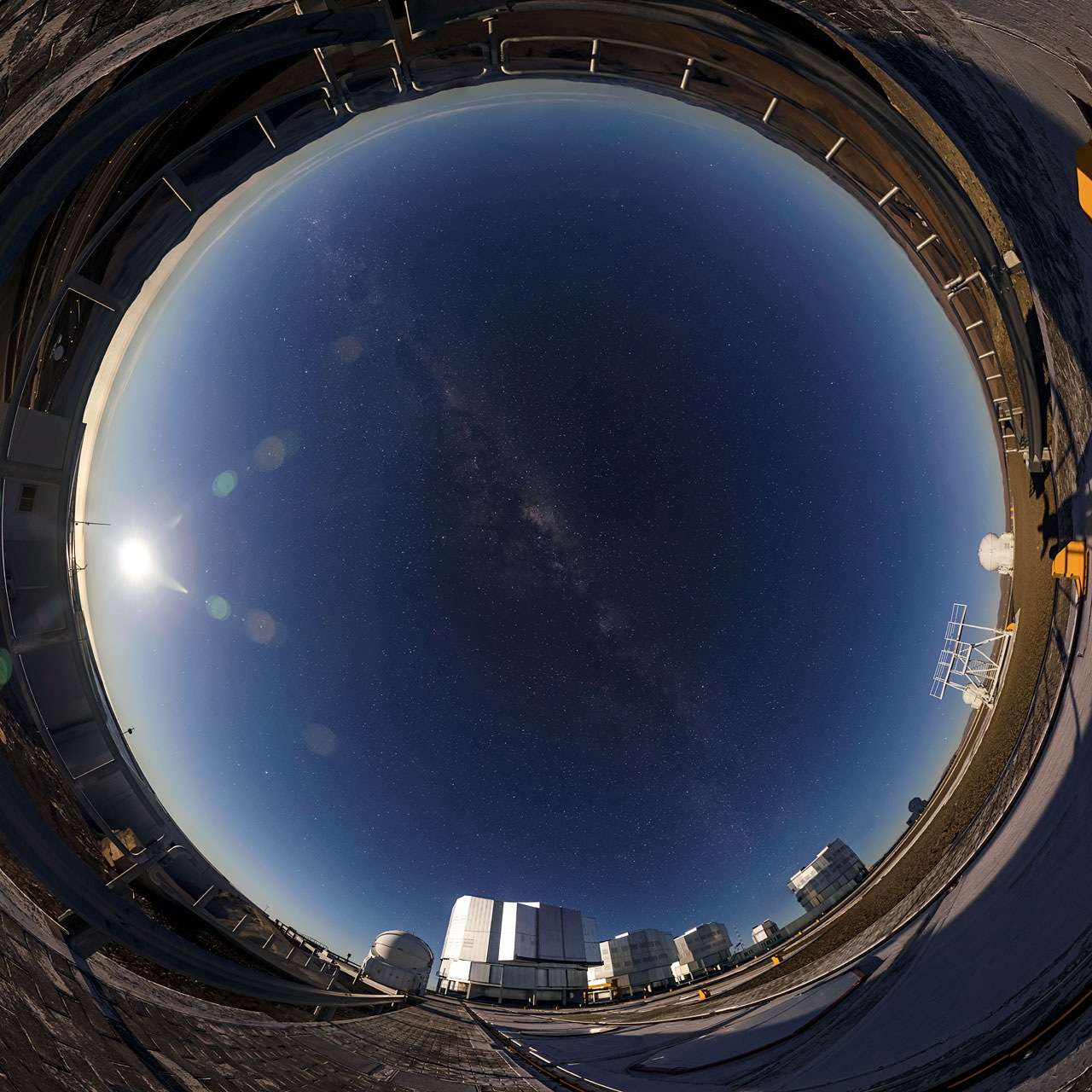
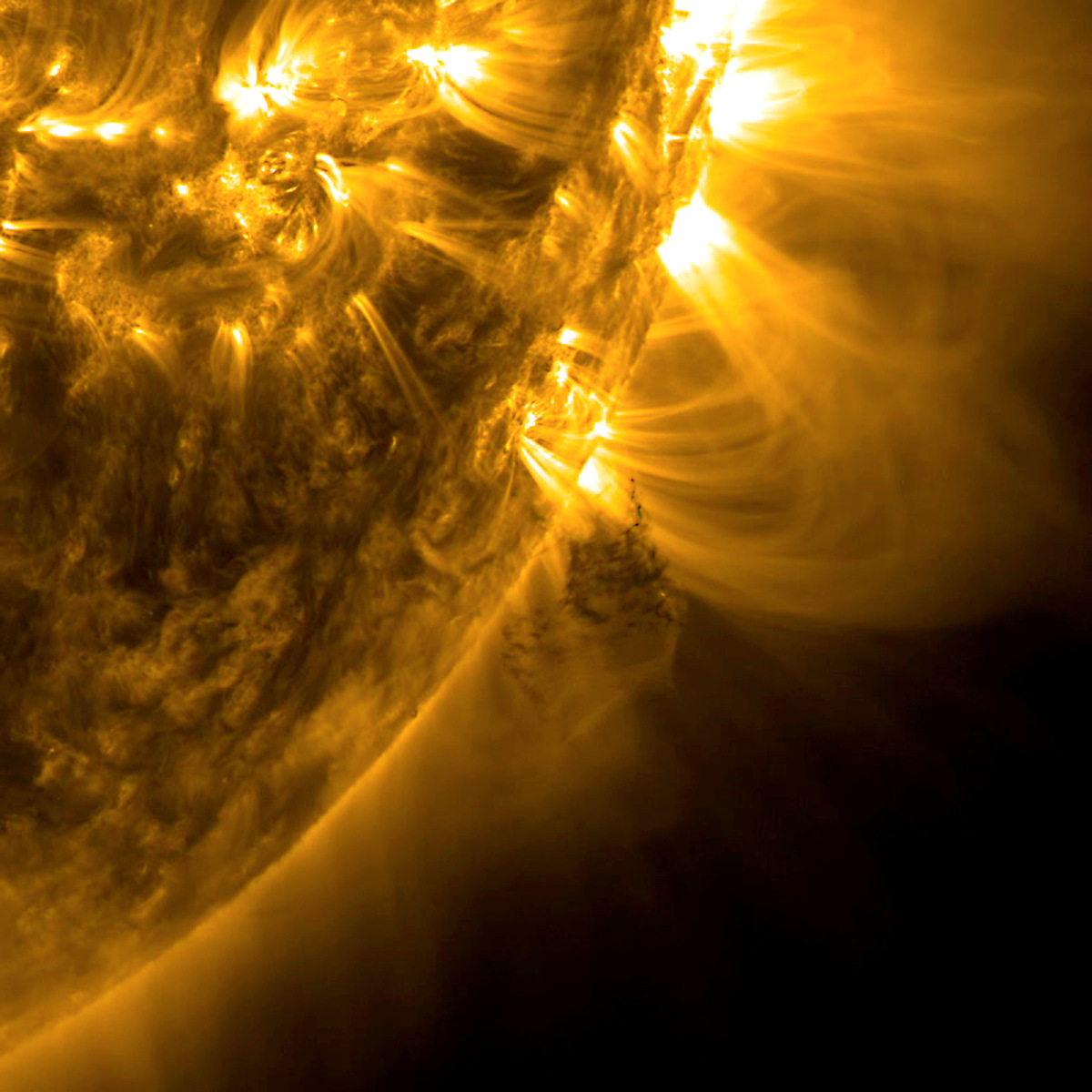

![[SBW2007] 1 Nebula With Giant Star](https://cdn.mos.cms.futurecdn.net/WVqhqh8jdAnxp7h2GAJ9Vh.jpg)
